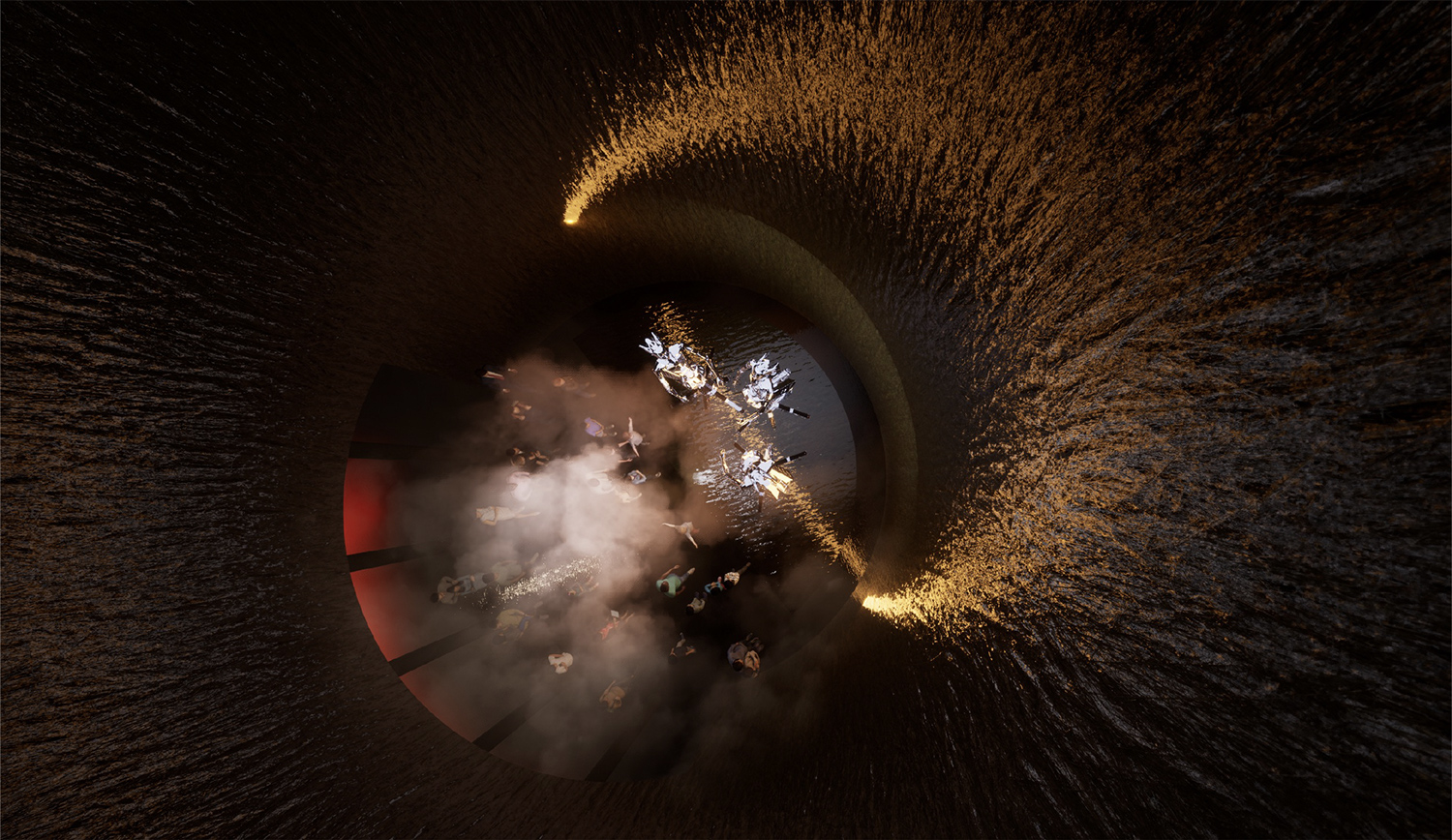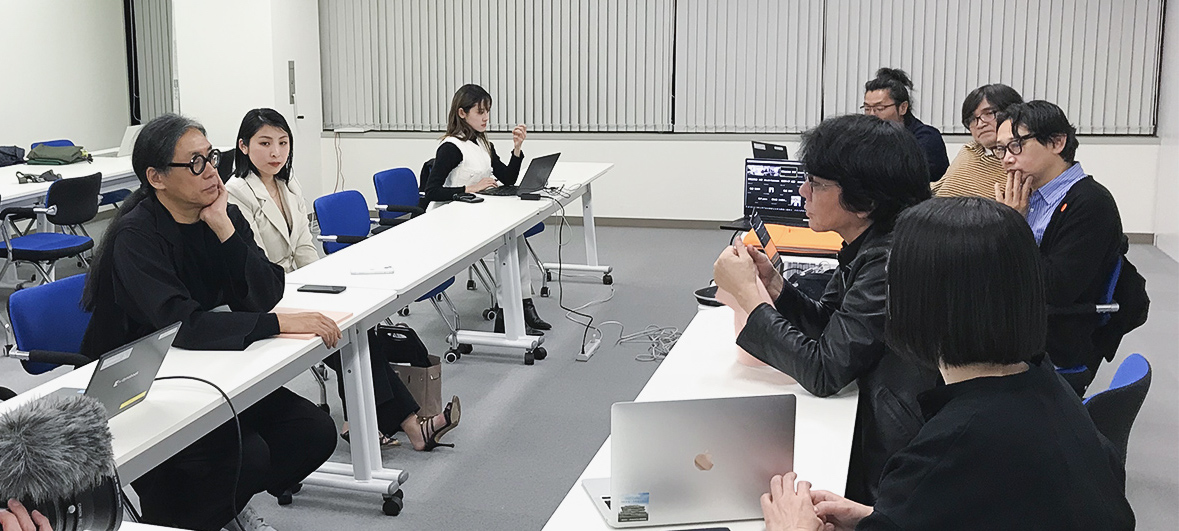[Secrets of Development #3: Robot and Android Design] Designing androids for a humane future
In the signature pavilion, “Future of Life,” visitors will discover a variety of robots and androids envisioned for the present, 50 years from now, and 1000 years from now. The design of these robots and androids is being handled by MATSUI Tatsuya, a robot designer and artist. He shares the ideas and concepts of ISHIGURO Hiroshi, the producer of the thematic project, and pursues robot and android designs that embody the themes of the Expo 2025 Osaka, Kansai, Japan and the signature pavilion. The following introduces Matsui’s ongoing creative process, with a sprinkling of comments from the man himself.
Exhibiting new forms of life
Before delving into the design aspect, let us first explain the exhibition concept within this signature pavilion. Artificial organs, genetic manipulation, human-like robots, and AI… Humans have ways of evolving not only through biological evolution like animals but also through scientific and technological advancements, and this is what make us distinctly human. Future humans will further develop and integrate science and technology to dramatically expand the possibilities of life, and evolve themselves, human society, and the environment and ecosystems that surround them with diverse values and happiness. The aim of this pavilion is to create and exhibit these new forms of life (humans and society).

Matsui primarily focuses on the design of robots that appear in future scenarios 50 years ahead and androids that might be encountered in spaces 1000 years in the future. In this report, we hear from Matsui about his perspective on this project, his design philosophy, and the design of androids 1000 years in the future. Please refer to [Secrets of Development #1] for the design of robots 50 years in the future.
Taking on beautiful design based on a shared vision cultivated over a quarter century
“I had never worked with Prof. Ishiguro on a project before, but I was neither anxious nor worried,” declares Matsui.
Their first meeting dates back about a quarter-century. They were both young researchers at the time, meeting at various conferences and workshops around the world, where they exchanged ideas and information.
“Having known Prof. Ishiguro for many years, I have come to understand his philosophy and thoughts on robots and feel that we share the same vision. What struck me at the start of this project was Prof. Ishiguro saying that ‘Humans have their hearts in society, and that’s what makes them human.’ When you do research on and build robots, you realize that humans engage in complex behaviors like connecting emotionally with others, and playing different roles within distinct units such as family and society. In other words, through the pursuit of robots, one comes to a better understanding of what it means to be human. This single statement from the professor made it clear to me that this is a project about envisioning a humane future through robots and androids, not a rational, mechanical future, and this realization allowed me to start without hesitation.
When Matsui first heard about the Future of Life signature pavilion and the theme “Amplification of Lives,” he realistically perceived this as setting the theme of a future that can only be addressed through science, but at the same time, he also felt that aesthetic expression would be required to secure acceptance by modern society.
“Many people have a knee-jerk rejection when they just hear the words ‘robot’ and ‘android.’ That is why I felt that the output and design must be such that even such people would feel that such a future might be desirable.”
This is a view that Matsui and Prof. Ishiguro share.
“Prof. Ishiguro is a rare roboticist who values the worth of art and design. Having participated in art club activities during his student days, he has a strong interest not only in the hardware of robots but also in their appearance and design, and he has his own ideas about beauty.”
What is the beauty of robots and androids that Matsui is pursuing this time?
“We want to pursue beauty that people of all races, nationalities, and backgrounds can relate to, because the Expo is also a place where people of all races, nationalities, and backgrounds come together. Taking inspiration from things that people have venerated since ancient times, such as divine sunrises and star-filled skies, I believe that we can find ways to express the kind of beauty that befits the Expo. For this reason, I think it is also crucial to pursue a world view where discrimination and prejudice, the frictions of culture, are eliminated.”

“Palette” (2005): a humanoid robot designed by Matsui
Reflecting on 1000 years ago to envision the androids in 1000 years
In addition to designing the robots and androids of 50 years in the future, Matsui is also tackling the design of androids 1000 years in the future.
“To capture the essence of 1000 years in terms of time and space, I felt it was necessary to revisit the culture of people from 1000 years ago. Fortunately, Japan still has many treasures from that era. The splendid culture of the Heian period in particular provided an excellent perspective. By visiting Kyoto and Nara and witnessing the national treasures there, such as the existing architecture and Buddhist statues, I gradually formed an idea of what should be conveyed to the next 1000 years, transcending the past 1000 years. It is a form of living ethics that one sometimes encounters when living in Japan, such as harmony and tranquility.”
When actually translating these ideas into designs, Matsui mentions that there are two main points he focuses on.
“The first is to express ‘concentrated happiness.’ In addition to the essence of tranquility that I mentioned earlier, I would like to express the sense of bliss that I have found in my 30 years of activities as a designer. The second is to integrate the most advanced modern technology in such a way that it is not apparent from the outside. This is because the cutting-edge technology of today will no longer be so a thousand years from now.”
In this project, the evolution of the act of designing is also being attempted. This is about designing that expresses the philosophy itself, rather than just showcasing functionality.
“Specifically, I am aiming for design that envelops everyone in joyful wonder. As I mentioned earlier, I found things in traditional Japanese forms that should be carried forward to the next 1000 years, but in actual design, I want to create something that can trigger a sense of openness in people all over the world. It is said that visiting places like the Sistine Chapel in Vatican City, Niagara Falls in Canada, or the Aji Pond in Byodo-in Houou-do, everyone feels the same inner heaven (a kind of inner peace and joy) in their heart, regardless of their religious beliefs, race, or nationality. I believe that seeking to design a venue that is imbued with the kind of joyful wonder common to these places will naturally lead to the expression of that very philosophy.”

“oeuf ho-oh (Egg of the Phoenix)” (2021): An art piece dedicated by Matsui to Byodo-in TempleThe theme is phoenix eggs watching over the next 1000 years. © Hono Project Photo: FUJITSUKA Mitsumasa
The Expo as a showcase of a happy future
Lastly, Matsui shared his thoughts on the unique expression of androids for the Expo that he is pursuing.
“Rather than just presenting androids that use cutting-edge technology, I believe that it is crucial to create androids that we find desirable and that evoke a new form of humanity. Therefore, my premise is imagining the kind of society that androids will live in. In other words, I am aiming for an expression that embodies the ultimate ideal future society. This is because I believe the Expo, even amidst current global circumstances, is a place to show a happy future.”

Please look forward to the design of robots and androids that not only look good, but also express the state of future society and a sense of bliss common to all humankind.
MATSUI Tatsuya
Designer/Artist
Born in Tokyo in 1969. After graduating from the College of Art at Nihon University in 1991, Matsui worked at Kenzo Tange Associates Architectural Office and later moved to France. He was involved in the design of humanoid robots such as PINO at the Japan Science and Technology Corporation. In 2001, he founded Flower Robotics, Inc. He designs and develops various robots, and his original robots have been exhibited at the Museum of Modern Art in New York, the Venice Biennale, the Musée des Arts Décoratifs in the Louvre, and the Vitra Design Museum, among other venues. In 2012, he founded Matsui Design Studio and has since been expanding his design projects. In recent years, he has also been active as a contemporary artist, creating and presenting modern art pieces. In 2021, he participated in the Byodo-in Offering Project, which was launched to pray for the end of the novel coronavirus pandemic, and dedicated his indigo-dyed glass artwork “oeuf ho-oh (Egg of the Phoenix)” to Byodo-in Temple. He has received numerous awards, including the Good Design Award (Japan), the 6th Nichigei Award (Japan), the ACC Bronze Award (Japan), the iF Design Award (Germany), and the Red Dot Design Award (Germany).
http://www.flower-robotics.com/